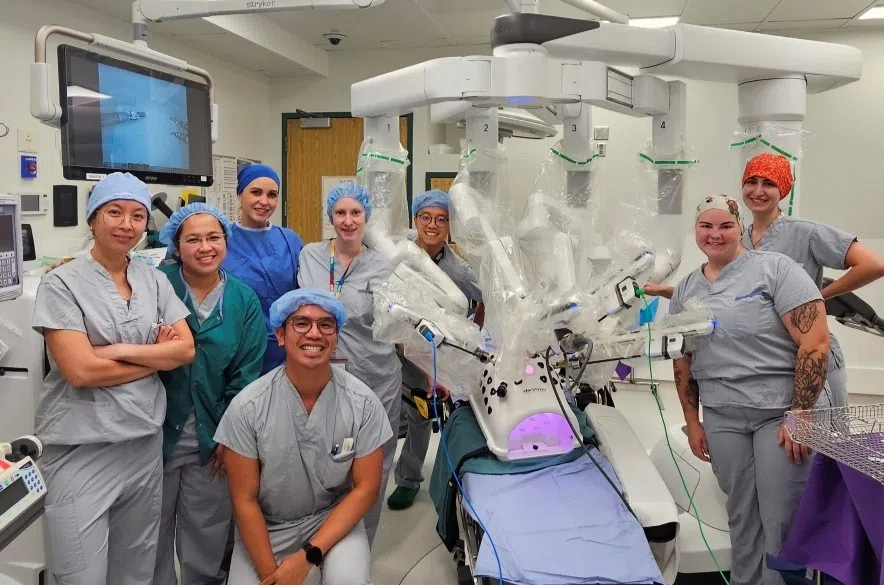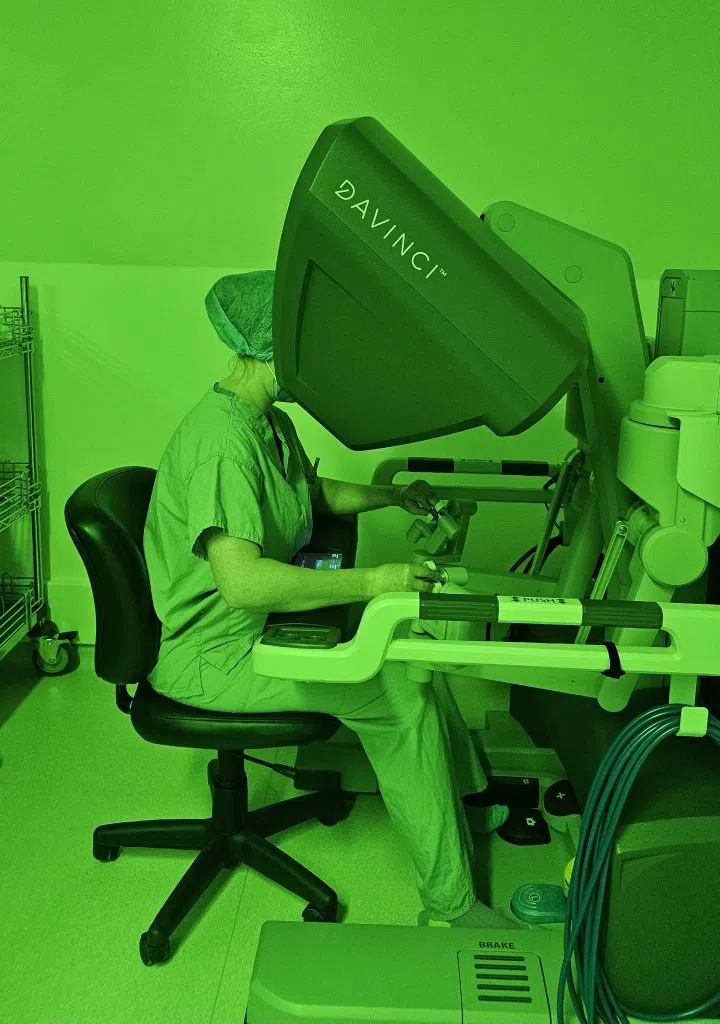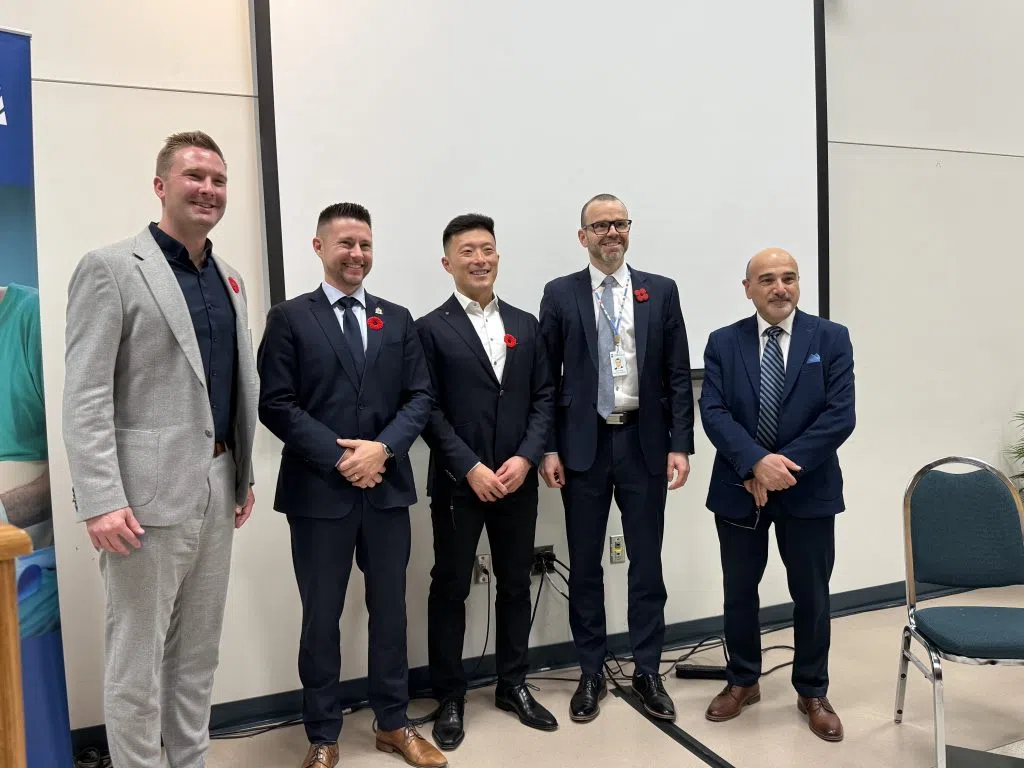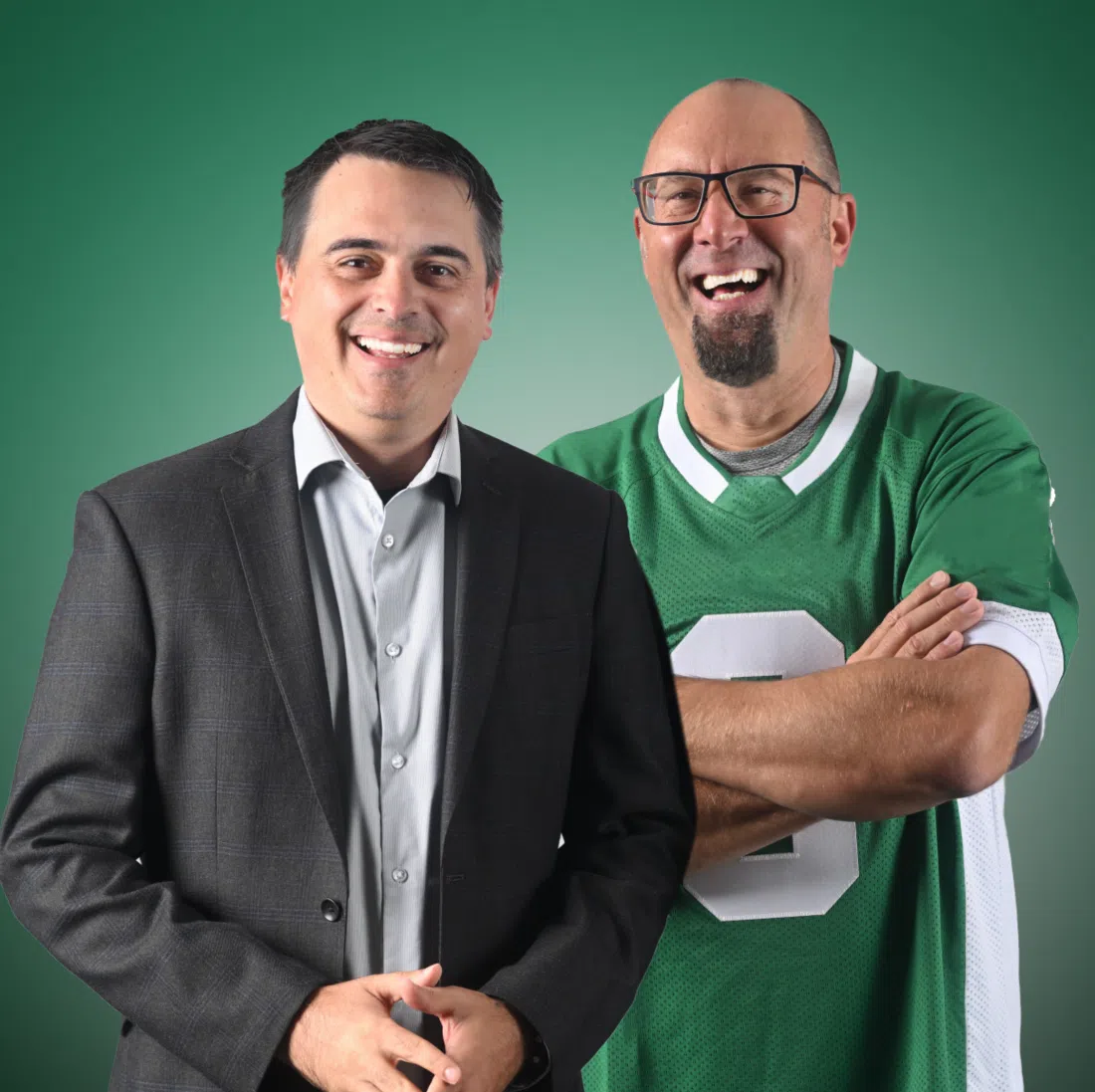It’s a historic first for Regina’s Pasqua Hospital.
It recently received a da Vinci Surgical System, the third one in the province; the other two are at St. Paul’s Hospital in Saskatoon.
Since the first surgery on Sept. 9, it has already assisted in nearly 20 other procedures, including hysterectomies and hernia surgery.
Read more:
- A playground fit for a princess: Sask. mom fundraising to improve accessibility
- ‘Stall tactic’: Health-care workers rally after years with no contract
- Saskatchewan creating provincial award to honour fallen public safety workers
The robot-assisted surgical system doesn’t replace the surgeon; it’s another tool in their toolbox, which provides better patient outcomes, including decreased post-operative complications, reduced pain, minimally invasive operations and shorter hospital stays.
Dr. Jeffery Gu was the first general surgeon to perform robotic-assisted surgeries (RAS) in Saskatchewan.
He said this is the next step in surgery.
“It gives us the capability to do much more precise surgery, (and it) makes more challenging surgeries a lot easier,” he said.
He’s one of two surgeons using it in Regina. He said they both love it.
“Before using the robot, I was actually a little bit skeptical of how great it would be, because I did everything laparoscopically… Now that I’m on the robot, I can’t go back,” he said.

Since Fall 2022, the province has invested $2 million annually to continue expanding the provincial RAS system. (Saskatchewan Health Authority/submitted)
Not only is it a first for the hospital and Gu, but for patients as well.
“I’ve told a couple of the patients when they’ve had the first robotic groin hernia, first robotic colectomy done, and they’re excited to share that with their family,” he said with a smile on his face.
Before undergoing robotic surgery, Gu explains how the robot works, and patients must sign a consent form.
“I tell them it’s a new technology,” he said. “Some people ask me if I’m still the one doing the surgery, and that I have to explain to them, ‘Yeah, it’s not AI.'”
What is the da Vinci surgical robot?
According to the SHA, the da Vinci surgical robot is a high-tech system that helps surgeons perform a wide range of minimally invasive procedures.
The surgeon sits at a central control panel and uses hand and foot controls to guide the robot’s arms, which hold tiny surgical instruments and a camera.
“Every movement the surgeon makes is translated into precise, scaled-down movements inside the patient, while natural hand tremors are filtered out,” the SHA said in a statement.
“The camera gives a magnified, 3D view of the surgical area, allowing the surgeon to see details much more clearly than in traditional surgery.”
Gu said the 3D view can magnify tissue up to 10 times.
“The visualization allows us to see really fine structures like vessels and nerves that sometimes can be more challenging to see with more traditional surgery,” he said.

The da Vinci Surgical System in Saskatoon, which is named Daryl after Merlis Belsher’s son. Belsher donated more than one million dollars towards its purchase. (Will Mandzuk/650 CKOM)
When compared to laparoscopic surgery, Gu said there are major differences.
“With laparoscopic surgery, you’re operating with essentially two long sticks that can move and have open jaws. But with the robotic arms, they rotate up to 540 degrees, which is more than our human wrists can articulate,” Gu said.
The da Vinci surgical robot is expected to provide more than 300 procedures each year once fully operational.
It can perform a variety of surgeries, like partially or fully removing cancerous tumours and organs, hysterectomies, various urology, kidney, and bladder procedures, as well as general surgery procedures, such as hernia surgery.













